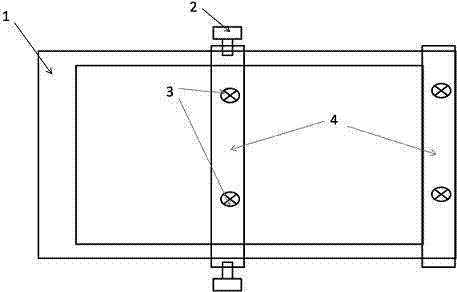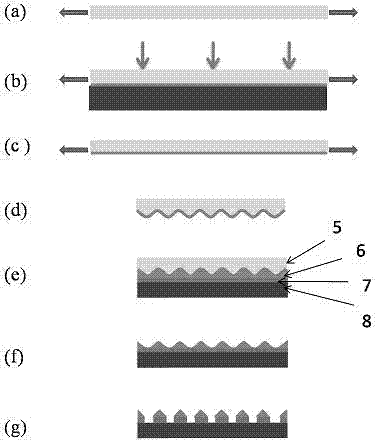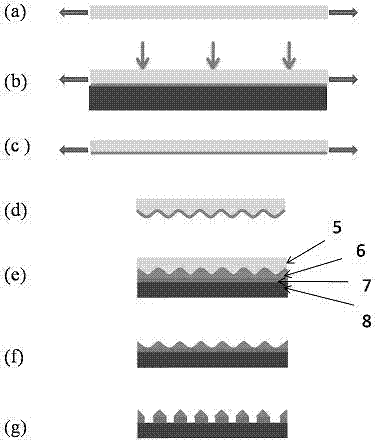Preparation method of nano-imprinting composite template
A composite template and nano-imprint technology, applied in the field of micro-nano processing, can solve the problems of slow electron beam direct writing speed and high cost
- Summary
- Abstract
- Description
- Claims
- Application Information
AI Technical Summary
Problems solved by technology
Method used
Image
Examples
Embodiment Construction
[0019] The present invention will be described in further detail below in conjunction with the accompanying drawings and embodiments.
[0020] The preparation of composite template of the present invention mainly comprises and is divided into following steps:
[0021] (1) Preparation and support of polydimethylsiloxane flakes.
[0022] a) After uniformly mixing component A and component B of SYLGARD? 184 polydimethylsiloxane precursor of Dow Corning Corporation in the United States at a mass ratio of 10:1, spin-coat it on the anti-sticking treated silicon wafer at a speed of 300RPM ;
[0023] b) Put a spin-coated polydimethylsiloxane silicon wafer in a vacuum drying oven, evacuate to 0.5 atm, keep the temperature at 65 degrees, and cure after 5 hours of heat preservation;
[0024] c) Divide the cured polydimethylsiloxane sheet into strips using a ruler and a blade;
[0025] d) use as figure 1 The clamp shown holds the polydimethylsiloxane sheet and stretches the sheet as r...
PUM
 Login to View More
Login to View More Abstract
Description
Claims
Application Information
 Login to View More
Login to View More - Generate Ideas
- Intellectual Property
- Life Sciences
- Materials
- Tech Scout
- Unparalleled Data Quality
- Higher Quality Content
- 60% Fewer Hallucinations
Browse by: Latest US Patents, China's latest patents, Technical Efficacy Thesaurus, Application Domain, Technology Topic, Popular Technical Reports.
© 2025 PatSnap. All rights reserved.Legal|Privacy policy|Modern Slavery Act Transparency Statement|Sitemap|About US| Contact US: help@patsnap.com



